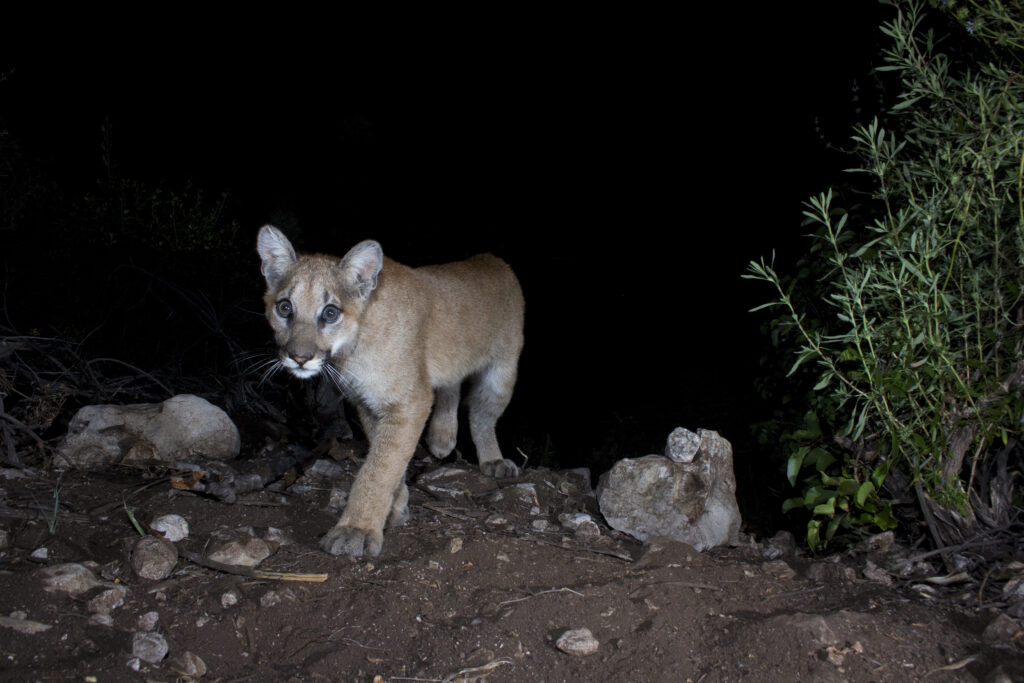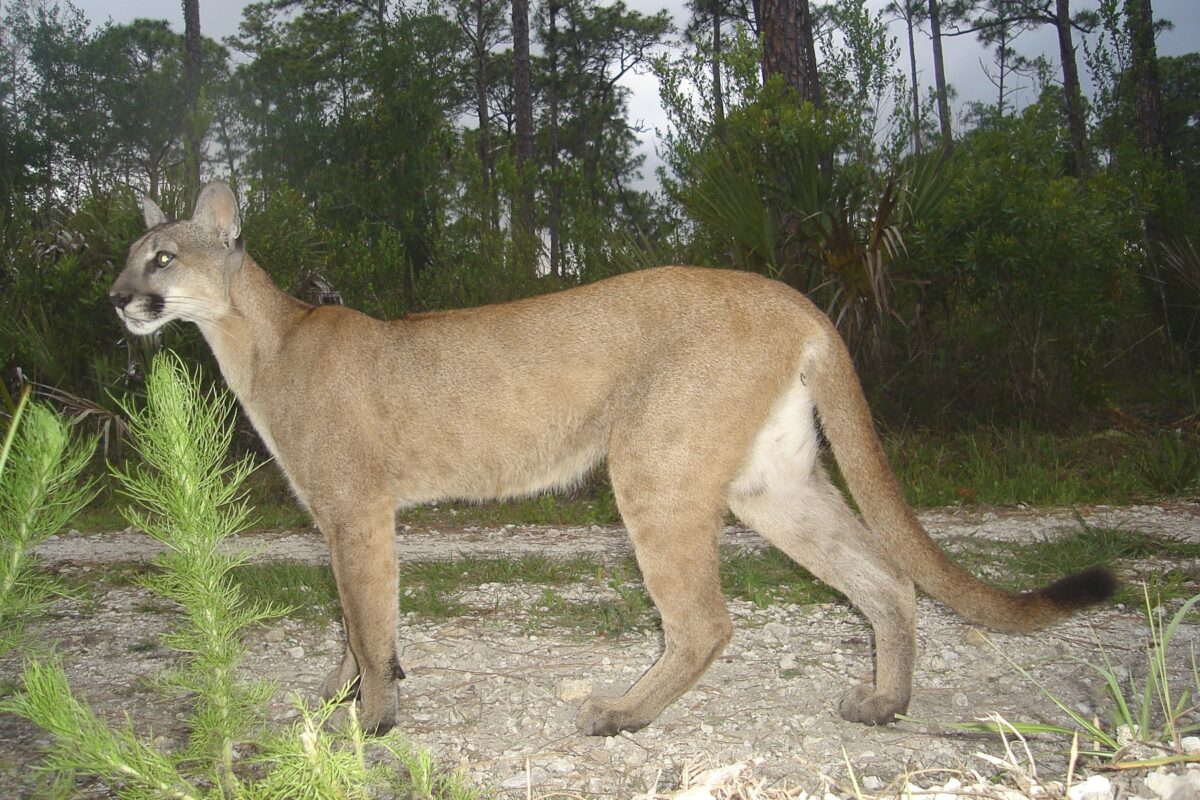Recent tragedies such as the mountain lion that attacked and killed Taylen Brooks in California and the harrowing mountain lion attack on Keri Bergere and her friends while mountain biking in Washington have left the rare occurrence of mountain lion attacks fresh in the minds of many.
The Mountain Lion Foundation offers our sincere condolences to those who have been affected by these attacks. On the rare occasions when they do happen, mountain lion attacks can be devastating.
Mountain lion attacks are incredibly rare, but there is no such thing as “risk free”
In spite of their rarity, each story of a mountain lion attack can incite fear, often quickly followed by a flurry of ill-informed plans to prevent such attacks. There have been 29 cases (not all confirmed) of fatal mountain lion attacks on humans in North America since 1868, for an average of about 0.18 attacks per year. For context, each year in the US on average 777 people die from mosquito-borne illnesses, 28 people are struck by lightning, at least 20 people die from firearm-related hunting accidents, 86 people die from animal venom, and about 35,000 to 45,000 people die from motor vehicle accidents. By contrast, in California alone, two mountain lions die of car strikes every week, on average.
Mountain lions are not a major public safety risk, but attacks on humans may have become more frequent after bounties were abolished and lion populations began to recover in the early 20th century. Despite the long odds of human injury, hearing about an attack can make people want to “do something.” However, it’s important to keep these risks in perspective: wildlife, including mountain lions, are valuable to people for both aesthetic and ecological reasons. We value activities that bring us into the outdoors, closer to our wild neighbors. As we work, play, and recreate in these wild spaces, our risks will never truly be eliminated. There is no such thing as “risk free” in the wilderness.
In his 1992 paper on the topic, Paul Beier stated:
“Although attacks were much rarer in the “bad old days” when deer were market hunted and cougars were shot on sight. The risk was still greater than zero. There has been at least 1 attack in every decade since 1890. It is impossible to reduce this small risk to zero without eliminating either cougars or humans from cougar habitat. Neither ‘solution’ is acceptable.”

The research on mountain lion attacks in North America
With an incredibly small sample size and varying record-keeping practices for different incidents, understanding the risk factors when analyzing mountain lion attacks has been a challenge for many in the field. Nonetheless, researchers have studied these attacks to understand them better.
Most attacks from mountain lions happen during the day, in summer and fall, and in wildlife areas where humans are recreating. The attacks typically do not happen when mountain lions are most active, nor are lions coming into developed spaces to attack humans. The attacks occur when humans are most active in mountain lion territories, indicating mountain lions are not seeking people out.
Mattson et al (2011) created a model using data from all mountain lion attacks in North America since 1890, to identify risks factors:
Young and/or unhealthy mountain lions are the most likely to attack humans, and the least likely to cause death in the victim. However, in the incredibly rare instances where healthy adult mountain lions attack people, the attack is more likely to be fatal — while the risks of adult attacks are lower, the consequences are greater.
The presence of a dog seems to reduce the likelihood of a mountain lion attack during the daylight. Dogs do not need to be excluded from trails to prevent attacks. This doesn’t hold true when a dog is at a residence at night. Securing dogs inside at night is a safer choice for the dog. (House cats too, for that matter.)
When encountering a mountain lion, the people who are aggressive (yelling, throwing objects, looming large, charging the animal, or using a weapon) are much more likely to avoid an attack entirely.
Children are more likely to be attacked by mountain lions than adults, but the presence of adults in a group doesn’t seem to deter a mountain lion from attacking. However, the presence of adults able to defend the child dramatically increases a child’s chance of survival if attacked.
Activity also seemed to affect the likelihood of an attack and fatality. People engaged in more erratic or high-energy activities, like running or mountain biking, were at a greater risk for attack and fatality. This may be because the prey response is more easily triggered in mountain lions from these movements. Additionally, these activities may reduce a person’s ability to respond quickly to a mountain lion and act aggressively, or to notice a nearby mountain lion quickly enough to stop and back away.
Compared to other large carnivores, mountain lion attacks have had a low fatality rate. Of known attacks, 15% of mountain lion attacks were fatal. Known attacks from the African lions, tigers, and leopards were all much deadlier with fatality rates of 62%, 78%, and 32%, respectively.

Management approaches to reduce attacks
Most people agree that preserving public safety is a priority. Mountain lion encounters are unlikely, and the likelihood of death from one is even slimmer, making their public safety risk very low. Regardless, we should still do what we can to prevent attacks.
Research into mountain lion management has identified that high levels of hunting lead to a population made up of primarily young mountain lions. This leads researchers such as Beier (1991) and Mattson, et al (2011) to speculate that higher hunting levels could make mountain lion populations “riskier.” The ability to reduce attacks through reduced hunting levels has never been observed, however we do have data to show that the absence of hunting doesn’t make an attack any more likely. In fact, some of the regions with the highest level of fatality due to mountain lion attacks also have some of the highest levels of hunting, such as Vancouver Island. Research on livestock depredations shows the same pattern, with areas with high hunting or more frequent lethal responses to depredation (including El Dorado County, CA, according to research by Dellinger, et al., 2021) showing higher rates of conflict in subsequent years.
In states where mountain lions are hunted, advocating for low levels of hunting that do not result in populations with age structures skewed toward young cats could be a strategy to reduce the likelihood of mountain lion attacks.
Staying safe and enjoying the outdoors
The best way to avoid a mountain lion attack is to never go into wild lands with mountain lions. For most people who love the outdoors, though, that is an unacceptable way to live, especially to avoid such a low-likelihood event. You are almost certain to never be faced with a mountain lion attack and are most likely safe to spend your time enjoying the outdoors.
To stay safe in mountain lion country you can carry pepper spray or a loud safety horn, travel in a group, supervise children, stay vigilant, and maybe bring a dog. Learn more about mountain lion safety here.
It is the Mountain Lion Foundation’s hope that attacks on humans are as rare as possible, and that people can continue to safely enjoy the outdoors and share the land with wildlife.
References
Beier, P. (1992). Cougar attacks on humans: an update and some further reflections. In Proceedings of the Vertebrate Pest Conference (Vol. 15, No. 15).
Brothers tried to fight off mountain lion during fatal attack in Northern California, family says. (2024). Associated Press. https://apnews.com/article/california-mountain-lion-attack-brothers-92b8b951c5e8d62a889af494d2d3642d
Dellinger, J. A., Macon, D. K., Rudd, J. L., Clifford, D. L., & Torres, S. G. (2021). Temporal trends and drivers of mountain lion depredation in California, USA. Human Wildlife Interactions, 15(1). https://doi.org/https://doi.org/10.26077/c5bb-de20
Grant, Melissa. (2024) Five against the wild: A gripping tale of courage and survival in cougar territory. Living Snoqualmie. https://livingsnoqualmie.com/five-against-the-wild-a-gripping-tale-of-courage-and-survival-in-cougar-territory/
Mattson, D., Logan, K., & Sweanor, L. (2011). Factors governing risk of cougar attacks on humans. Human-Wildlife Interactions, 5(1), 135–158. https://www.jstor.org/stable/24868869
Laundré, J. W., & Papouchis, C. (2020). The Elephant in the room: What can we learn from California regarding the use of sport hunting of pumas (Puma concolor) as a management tool?. PLOS ONE, 15(2), e0224638.
Peebles, K. A., Wielgus, R. B., Maletzke, B. T., & Swanson, M. E. (2013). Effects of remedial sport hunting on cougar complaints and livestock depredations. PLOS ONE, 8(11), e79713.
Robinson, H., & DeSimone, R. (2011). The Garnet Range mountain lion study: characteristics of a hunted population in west-central Montana. Montana Department of Fish, Wildlife & Parks.
Wang YY, Weiser TG, Forrester JD. Cougar (Puma concolor) Injury in the United States. Wilderness & Environmental Medicine. 2019;30(3):244-250. doi:10.1016/j.wem.2019.04.002



 Facebook
Facebook Twitter
Twitter Send Email
Send Email


